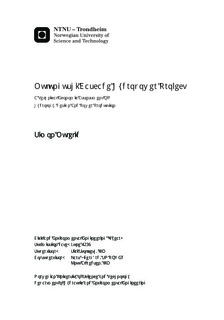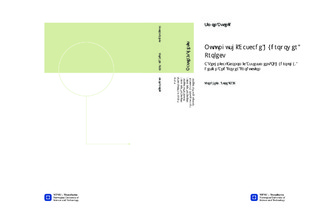| dc.contributor.advisor | Stokseth, Siri | nb_NO |
| dc.contributor.advisor | Odergård, Lars | nb_NO |
| dc.contributor.advisor | Alfredsen, Knut | nb_NO |
| dc.contributor.author | Mulelid, Simon | nb_NO |
| dc.date.accessioned | 2014-12-19T12:33:06Z | |
| dc.date.available | 2014-12-19T12:33:06Z | |
| dc.date.created | 2014-09-10 | nb_NO |
| dc.date.issued | 2014 | nb_NO |
| dc.identifier | 745628 | nb_NO |
| dc.identifier | ntnudaim:10982 | nb_NO |
| dc.identifier.uri | http://hdl.handle.net/11250/242496 | |
| dc.description.abstract | Steadily increasing economic growth and population growth in Zambia implies that the need for electrical power will increase in the coming years. There are currently developed around 1788 MW of a potential of about 6000 MW. It is therefore expected a major development in the coming years. This will contribute to improved living standard for the natives. This thesis addresses the hydropower project Mulungushi cascade , which is to be built about 70 km. southeast of the town Kabwe in Zambia. An Italian consultant has outlined the major components in a sketch project, and this is the basis for this report. It is planned to construct two new hydropower plants in a cascade with respectively 300 and 143 meters of head. Data on local conditions are mainly obtained from a database with reports from the planning of a larger power plant 60 km. further east. This applies to both hydrology and costs for development, and has been supplemented by more traditional Norwegian costs basis and tools like TunSim. Hydrological models have been used to simulate the inflow to the ungauged catchments. This has laid the foundation for the technical- economic optimization of the various components, and for the power production simulation. The report argues for some changes in the conceptual plans. This includes replacing a large dam (h≈70m) with a small threshold (h< 3m) and a transfer tunnel (1100m), at a cost saving of approximately 22.8 M USD. In addition it is argued for replacing the penstock and surface power house for the Mboshi power plant with a solution consisting of a shaft and power station underground. This represents a saving of approximately 5 M USD.It has been focused on optimizing the major cost drivers in the project such as dams, waterways and power plants and therefore smaller parts of the project has been omitted. This is to get an overview of the main components before optimizing the smaller parts. The total cost of construction is estimated to 165.11 M USD. Simulation of power production based on the overall technical specifications and the hydrological time series gave an average production of 370 GWh. | nb_NO |
| dc.language | eng | nb_NO |
| dc.publisher | Institutt for vann- og miljøteknikk | nb_NO |
| dc.title | Mulungushi Cascade Hydropower Project: A Technical Economic Assessment Of Hydrology, Design And Power Production | nb_NO |
| dc.type | Master thesis | nb_NO |
| dc.source.pagenumber | 128 | nb_NO |
| dc.contributor.department | Norges teknisk-naturvitenskapelige universitet, Fakultet for ingeniørvitenskap og teknologi, Institutt for vann- og miljøteknikk | nb_NO |

